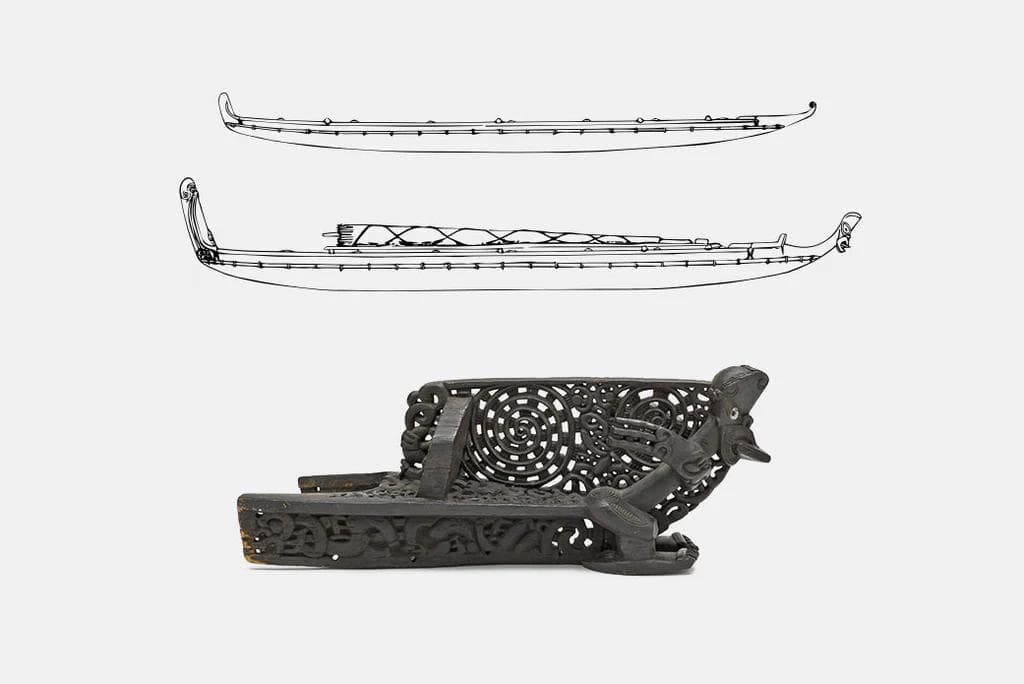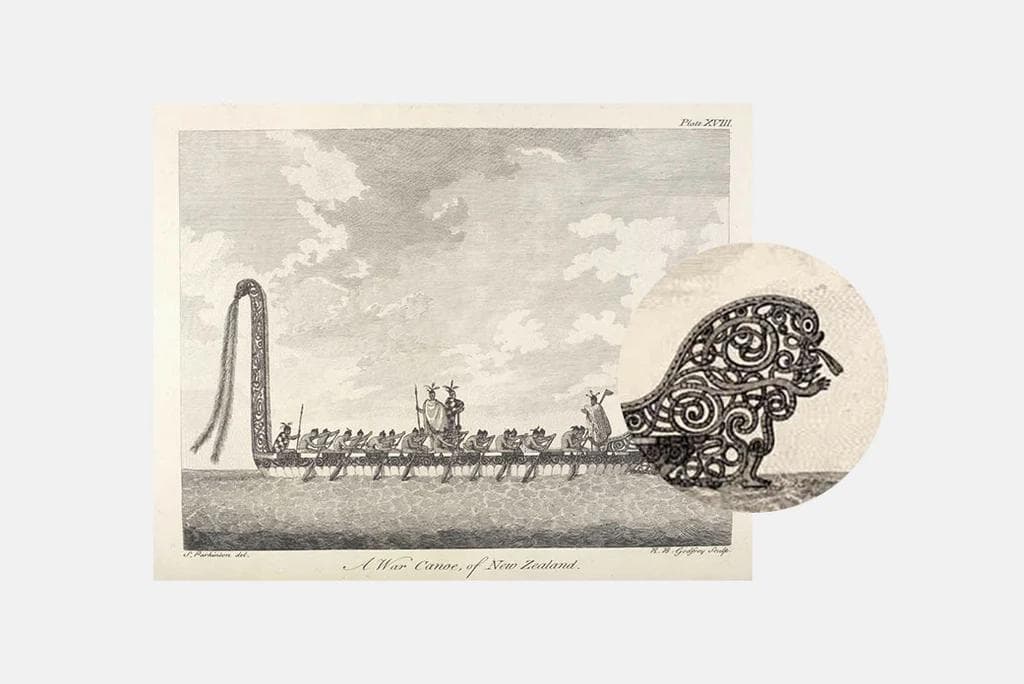24 Jul 2017

The essence of Māori culture still has strong ties to the modern day New Zealand identity. It greets you when you land in our airports, it’s seen in many of our acclaimed destinations in New Zealand and it’s hanging on the necks of many of the kiwis you will meet and interact with every day.
An important aspect of the Māori heritage that resonates with a wider New Zealand identity is their intricate and enigmatic carvings and art.
Carving dates back to the beginning, as it is a renowned Māori practice surrounded in tapu beliefs and traditional customs.

The history of carving starts with the story of Ruatepupuke. He discovered the art of carving when his father, Tangaroa, the God of the sea captured his son and Tangaroas’s great-grandson, Te Manuhauturuki. According to lore Te Manuhauturuki had a never-ending hunger for seafood, to satisfy his hunger Ruatepupke crafted a stone into a fishing lure and named is Whatukura-o-Tangaroa (the sacred stone of Tangaroa). However, Tangaroa was offended that his name had been used without permission by his own grandson and sought revenge.
When Manuhauturuki tried the lure, he caught large amounts of fish but did not abide by the custom and tradition of offering the first fish back to Tangaroa, which further angered him. Tangaroa decided to punish his great-grandson by pulling him down to the depths of the sea where he was then transformed into a tekoteko (carved figure) and placed at the top of Tangaroa’s house.
When Ruatepupuke noticed his son was missing, he followed his footsteps to the water's edge and dived into its depths. He came to the village under water where Tangaroa lived and found houses covered in carvings, some of which were animated, singing and talking to each other.
When Ruatepupuke asked the carvings about his son, one of the talking carved posts told him to look to Tangaroas house, where there was bird shaped tekoteko atop his roof, as that was his son.
Ruatepupuke then hid in Tangaroa’s house and waited for the fish people who lived there to fall asleep. He then set the house on fire and rescued only his son and some of the poupou that were unable to speak, which is how the first carvings came into the world.
The origin of this story comes through from their homeland of Hawaiki and is said that years later the descendants of Ruatepupuke brought these carvings with them to Aotearoa (New Zealand.)
The origins of Māori carvings have mixed ties, as is differs from the typical Polynesian style. It has been speculated that there could be ties to Melanesia, Peru and even India – though this has no direct confirmation.
The basic Māori patterns do, however have ties to Polynesia, especially in respect to carvings representing humans or figures.

The locations, in which the styles are most similar with the Māori carvings in New Zealand, are that of Hawaii and the Marquesas. Regardless of similarities between them, there is something distinctly unique with the traditional Māori carvings. The thinking is, with the distance from their ancestors the carving style evolved into something divergent and significantly their own – which is now a signifying element to the traditional New Zealand heritage and culture.
As Māori people were extremely religious and spiritual, they performed many rituals, of which required significant objects. These often acted as vessels for the gods or ancestors where they may take up residence for a time. These objects were always ornately and distinctly carved to elevate the importance of the object.
In Māori history, carving itself was also a spiritual act surrounded in tapu. The wood chips carved and the tools used were all considered tapu, and thus were put in high regard. Same also goes for the carvers who would craft their intricate designs into wood, stone and the sacred, pounamu. They were highly regarded people within the tribe.
This concept first starts with the fact that anything natural has direct ties to atua, the gods. Wood came from Tane, the god of the forest and the trees were his children. Pounamu was said to be the children of Poutini, the taniwha who was the guardian of the god Ngahue.
This concept of tapu has had many influences on present day beliefs as well, such as gifting pounamu and the belief in blessing one's own pounamu.

The Māori artistic vocabulary was filled with a variety of motifs and symbols, many of which still hold their importance and meaning in the modern day.
The Koru is one of the most used within carving, as it can range from being the carved object itself to an element of design drawn or carved on a flat surface. The diversity of koru has been used since pre-classic Māori times and most likely dates back to their origin. Today it is still a popular symbol for its adopted meaning and design aesthetic for traditional styled and more modern Māori art and carving.
Another significant carving shape is the Hei Tiki. The Hei Tiki is meant to resemble both man, god and ancestors, depending on the intent by the carver. Māori recognised people off the tattoos on their face opposed to distinct facial features. These characteristics were then also used to give life-like aspects to a past relative when carving their form.
Close to the Hei Tiki, the Mania form was a classic motif that was often found alone in form with characteristics that resembled that of a tiki. It’s thought to be a symbol of protection and many old versions of the mania have been found carved from bone, stone and pounamu.
There are many more Maori designs that hold their significance in both history and today's society, those of which can be explored further in our meanings and designs pages.

Bar far one of the most significant and iconic spaces where carvings are used is in maraes. Maraes are a fenced complex of carved buildings and grounds owned by particular iwi’s (tribes) or families. It is seen as a place of belonging and as such has a significant importance within the community. The Wharanui is the central space and stands as the iconic and intricately carved building within the marae, it is one of the most important buildings within the complex. It is constructed to resemble a human form in structure and usually represents a particular ancestor of the tribe.
The tekoteko (carved figure) on the roof of the house represents the head, with the maihi (carved, sloping front boards) signifying the arms, held out ready to welcome visitors. The two straight and short boards at the front of the wharenui represent the legs and the tahuhu (ridge pole at the top of the roof) is the spine. Throughout the whole construction, there are intricate and traditional carved patterns and figures, which refer to the wider whakapapa and genealogy of the tribe. Alongside this, there are carved panels that share Māori stories and legends. The entire structure is a testament to history, tradition and family of the community and wider New Zealand.

A waka is a traditional Polynesian canoe. Historically used for voyages or going to war, they were spiritual and ornately carved with traditional designs. When the Māori came to New Zealand from wider Polynesia, they traveled in these wakas to our shores. The large wakas are called waka taua and were typically used as war canoes. As they carried bodies back after battle they had a heightened tapu, as an important vessel.
Wakas are carved from wide-girthed trees, when they arrived in New Zealand they could craft more complex designs as they had a wider selection of trees to choose from. They developed a variety of traditionally carved canoes for the coast and inland waterways; they were used for everything from fishing to war parties, with some being carved ornately and others being simple in design and detail.

The waka has an important and close significance within New Zealand. As it was the vessel that brought the Māori people to New Zealand as is a core component in the origin stories of the land from them.
When visiting New Zealand, ornately carved waka can be found in our museums, galleries and if you’re lucky you may see one in the water.
It's hard to summarise the depth and significance of Māori designs fully, however we hope this is a taste of the importance they have within the Māori culture both traditionally along with in a modern day New Zealand form of identity. Many of the elements in Māori carving hold a strong importance and worth for Māori people along with New Zealanders overall.